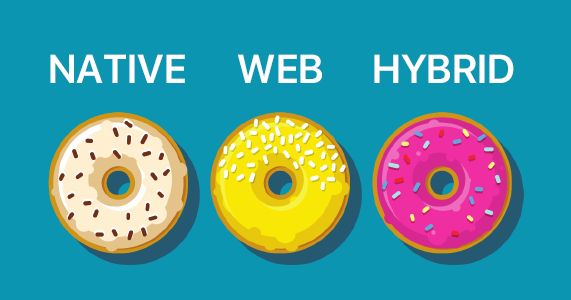
According to the analytical resource “Business of Apps”, app revenue for iOS and Android in 2021 reached $133 billion, up 19% from 2019. These numbers are motivating many aspiring developers to create their own apps.
But before you even begin thinking about design, functionality, and monetization, you need to decide what kind of app you’re going to create. This choice determines how your idea will be realized, and then the final product will be able to satisfy the needs of your audience.
There are three main types of mobile apps:
We’re going to take a look at each of these types in detail, including their features, advantages, and disadvantages.
These apps are designed for a specific platform - Android or iOS, and written in its native programming language. For example, Objective-C, Swift for iOS, or Java for Android. They are loaded from the device’s memory and have access to the hardware, gyroscope, microphone, camera, GPS, NFC, and so on.
Advantages
Disadvantages
Examples: Instagram, Shazam
These apps are essentially adaptive websites whose interface mimics that of a native app. They can run through a browser on any device. Written in JavaScript, Ruby, CSS, HTML5 and other web development languages.
Advantages
Disadvantages
Examples: cnn.com, economist.com.
These are web apps that launch from the device and look and work like native apps. Their development combines the use of proprietary APIs and web technologies, HTML5, CSS, and more.
Advantages
Disadvantages
Examples: Gmail, TripCase.
How an app is distributed can affect its success. Native and hybrid apps can be found and downloaded in marketplaces like Google Play or the App Store. The advantage of this distribution method is the organic traffic that the marketplace gets. Popular apps can show up on the main page and attract even more traffic, and therefore more money. The disadvantage of this approach is the strict requirements for apps and market limitations. It’s not always possible to realize your original idea.
Web apps have no limits because they can run just as the developer wants them to. On the other hand, not having the privileges that marketplaces provide is a significant drawback for many.
Your budget is the main thing to consider when developing an app. Web apps require minimal investment, while native apps require the most.
Native development is an ideal solution for apps that require speed, stability, a beautiful design, and access to all of the functionality of the device’s hardware.
Web apps are for simple projects, something that doesn’t require push notifications, hardware access, or a high level of performance. Informational resources are a good example.
Hybrid apps are suitable for automating business processes when there’s no need for full hardware access. Ideal for when you need to develop an app for several operating systems at the same time. Or if you want to create an MVP, a hybrid app will help you test the idea. If successful, then you can create a full-fledged native version for one or more platforms.
With nothing but a visual interface, you can create an app in the shortest possible amount of time, leading to faster profits, and potentially, a faster sale of the app itself.